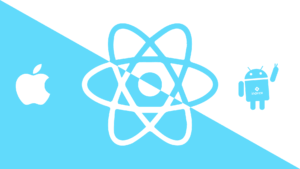Developing an Android game can be a thrilling experience, but it requires a powerful computer that can handle the complex requirements of game development. Choosing the right computer is essential for creating a successful game that runs smoothly and looks visually appealing.
The computer specifications for Android game development vary depending on the complexity and size of the game, but having a minimum requirement and recommended specification can help to ensure that your computer is capable of handling the workload.
In this article, we will discuss the essential computer specifications required for Android game development, as well as recommended options for the best performance and results.
Minimum Requirements For Android Game Development
To develop an Android game, you need a computer with specific minimum requirements to ensure that it can handle the software, graphics, and other elements involved in game development. Here are the minimum requirements for Android game development:
1. Processor:
The processor is the brain of the computer, and it is essential to have a processor that can handle the demands of game development. A dual-core processor with a speed of at least 2 GHz is the minimum requirement for Android game development.
2. RAM:
RAM is essential for storing temporary data while the game is running, and it is necessary to have a minimum of 4 GB of RAM for Android game development. More RAM will provide better performance and allow you to work with larger files and more complex games.
3. Graphics Card:
The graphics card is essential for displaying high-quality graphics and animations. A minimum requirement for an Android game development graphics card is NVIDIA GeForce GTX 750 Ti or an AMD Radeon R7 265. It is also essential to ensure that the graphics card has at least 2 GB of dedicated memory.
4. Storage:
Storage is essential for saving your game files, software, and other data. A minimum of 100 GB of storage space is required for Android game development. A solid-state drive (SSD) is recommended for faster load times and better overall performance.
5. Operating System:
You need an operating system that is compatible with the software and tools used in game development. For Android game development, a minimum requirement is Windows 7, 8.1, or 10 (64-bit).
These are the basic minimum requirements for Android game development.
However, it is essential to note that the complexity and size of the game will require more powerful specifications for optimal performance. Larger games with more complex graphics, animations, and sound effects may require higher processor speeds, more RAM, and better graphics cards.
It is also important to ensure that your computer meets the minimum requirements of the game engine or development platform you are using.
Unity, Unreal Engine, and other game engines have their minimum requirements, and you must ensure that your computer meets or exceeds these specifications for optimal performance.

In summary, having a computer with the minimum requirements for Android game development is essential for creating a successful game.
A dual-core processor with a speed of at least 2 GHz, 4 GB of RAM, NVIDIA GeForce GTX 750 Ti or an AMD Radeon R7 265 graphics card, 100 GB of storage, and Windows 7, 8.1, or 10 (64-bit) operating system is the minimum requirement. However, more powerful specifications may be necessary for larger and more complex games.
Processor Requirements For Android Game Development
The processor is a crucial component when it comes to Android game development. It is responsible for executing all of the instructions that make up the game, including rendering graphics, processing physics, and handling player input.
As such, having a powerful processor is essential for achieving optimal performance and creating high-quality games.
For Android game development, it is recommended to have a quad-core processor with a speed of at least 3 GHz. This means that the processor has four cores, which can each handle separate tasks simultaneously.
A higher clock speed means that each core can execute instructions more quickly, resulting in faster overall performance.
The type of processor is also important to consider. For example, Intel processors are known for their single-core performance, which is important for tasks that require a lot of processing power, such as compiling code.
On the other hand, AMD processors are known for their multicore performance, which is important for tasks that can be split into smaller chunks, such as rendering graphics.
Another factor to consider when it comes to processors is the cache size. The cache is a small amount of memory located on the processor itself, which stores frequently used data for quick access.
A larger cache size can result in faster performance, particularly for tasks that require a lot of data to be accessed frequently.
For larger and more complex games, it may be necessary to have a higher-end processor. This can include processors with six or eight cores, or processors with higher clock speeds. However, it is important to note that the specific requirements will vary depending on the size and complexity of the game.
When it comes to choosing a processor, it is also important to consider the development platform or game engine being used. Some platforms may have specific processor requirements, and certain game engines may be optimized for certain types of processors.
For example, the Unity game engine is optimized for Intel processors, while the Unreal Engine is optimized for AMD processors.
In addition to the processor itself, it is also important to consider other factors that can impact performance, such as cooling and power supply. A processor that runs too hot can experience throttling, which can result in slower performance, while insufficient power can result in instability and crashes.
Overall, the processor is a crucial component when it comes to Android game development. It is responsible for executing all of the instructions that make up the game, and having a powerful processor is essential for achieving optimal performance and creating high-quality games.
When choosing a processor, it is important to consider factors such as the number of cores, clock speed, cache size, and the development platform or game engine being used.
Additionally, other factors such as cooling and power supply should also be taken into account to ensure the best possible performance.







